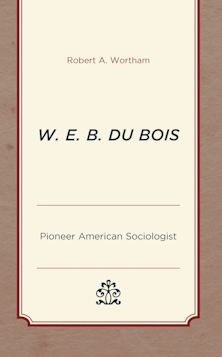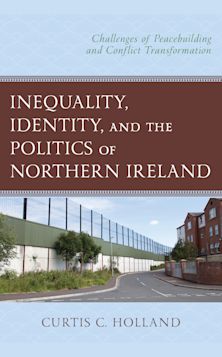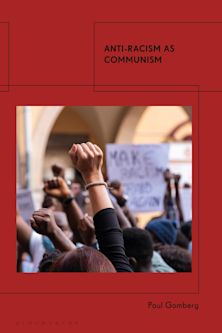- Home
- ACADEMIC
- Politics & International Relations
- Race and Ethnicity
- Religions in Asian America
Religions in Asian America
Building Faith Communities
- Textbook
Religions in Asian America
Building Faith Communities
- Textbook
Inspection copy added to basket
This title is available for inspection copy requests.
Please note our inspection copies are only available in ebook format, and are fulfilled by VitalSource™. If an ebook isn’t available, please visit our inspection copy page for more information.
Buy from Bloomsbury eTextBooks
You are now leaving the Bloomsbury Publishing website. Your eBook purchase will be with our partner https://www.vitalsource.com.
Your credit card statement will show this purchase originating from VitalSource Technologies. They will also provide any technical assistance you might require.
You must sign in to add this item to your wishlist. Please sign in or create an account
Description
The flux of Asian immigration over the last 35 years has deeply altered the United States' religious landscape. But neither social scientists nor religious scholars have fully appreciated the impact of these growing communities. And Asian immigrant religious communities are significant to the study of American religion not only because there are more than ten million Asian Americans. Asian American religions differ substantially from models drawn from European religions, pushing for new wider understandings. Religions in Asian America provides a comprehensive overview of the religious practices of Chinese, Filipino, Indian, Korean, Japanese, Vietnamese, Cambodian, and Laotian Americans. How these new communities work through issues of gender, race, transnationalism, income disparities and social service, and the passing along an ethnic identity to the next generation make up the common themes that reach across essays about the varying communities. The first sociological overview of Asian American religions, Religions in Asian America is necessary reading for those interested in Asians, ethnicity, immigration or religion in the United States.
Table of Contents
Chapter 2 Theoretical Frameworks: Ethnicity, Social Services, Race, Gender, Generation, and Transnational Ties
Chapter 3 Religious Diversity among the Chinese in America
Chapter 4 Filipino Religion and Spirituality: Traditional Roots and Immigrant Transformations
Chapter 5 "We Are Better Hindu Here": Religion and Ethnicity among Indian Americans
Chapter 6 Cartography of Korean American Protestant Faith Communities in the U.S.
Chapter 7 Religious History of Japanese Americans in California
Chapter 8 Rebuilding Spiritual Lives in the New Land: Religious Practices among Southeast Asian Refugees in the United States
Chapter 9 Asian-American Pan-Ethnic Formation and Congregational Culture by Russel Cheung
Product details
| Published | 18 Dec 2001 |
|---|---|
| Format | Ebook (PDF) |
| Edition | 1st |
| Extent | 224 |
| ISBN | 9798216229605 |
| Imprint | AltaMira Press |
| Series | Critical Perspectives on Asian Pacific Americans |
| Publisher | Bloomsbury Publishing |
About the contributors
Reviews
-
This collection of articles illustrates how the function and form of Asian religions in the United States is being modified to help ethnic groups adapt to a new environment. It also demonstrates that, over generation, increased assimilation into the general culture and mastery of the English language have changed these Asian immigrants and thereby changed the forms and functions of the religions themselves.
Review For Religions
-
For social scientists, Religions in Asian America is the best overall introduction to a neglected topic. It comes at an appropriate moment when a wave of studies of immigrant religion has been complete and will provide a good summary of the field for the next wave of researchers. Its clear style also makes it desirable as a supplementary text.
Tony Carnes, Columbia University, Contemporary Sociology
-
This book is one I enthusiastically recommend for two reasons. First, because of our need to understand the relationship between religions and the cultural lives of Asian Americans and, second, because the different ways of preserving ethnicity through religion are understudied.... This work is an important resource on the study of transformations of religious traditions and the integration of religious boundaries. Scholars, teachers, and students are in the debt of these authors for addressing the paucity of research on the religious experiences of Asian immigrants.
Mary Phillips, Harvard University Asia Center, Sociology of Religion: A Quarterly Review
-
This book is a guide for the study of Asian-American religious communities, both Christian and non-Christian, and is highly recommended for those interested in this important topic.
Multicultural Review
-
This is a superb, badly-needed collection of original analyses of the many ways in which Asians are currently (and have been for a century) settling religiously in the United States. It belongs in scholarly libraries and in the collections of comparative religionists and it ought to have widespread classroom use...the paperback issue is a bargain.
R Stephen Warner, professor of sociology, University of Illinois at Chicago, Royal Institute for Inter-Faith Studies
-
Asian Americans are the fastest-growing and most diverse racial group in the United States. They are major participants in every American religious tradition: They are Presbyterians and Baptists, Buddhists and Mormons, Catholics and others. Religious practices and institutions are the glue that holds together most Asian American communities. Yet scholars of both religion and ethnic studies have up until recently almost completely ignored the religious lives of Asian American peoples. A group of talented young scholars, led by Pyong Gap Min and Jung Ha Kim, has set about redressing that neglect in Religions in Asian America. It is a tour de force. It outlines the religious issues that animate several ethnic communities: Chinese, Filipinos, Koreans, Japanese, Southeast Asians, and the new pan-Asian ethnic group. It examines a variety of traditions and a host of issues. Relying mainly on sociological and historical modes of analysis, it lays out the territory for Asian American religious studies. Bristling with ideas and insights that will keep scholars working for a decade, Religions in Asian America is a gold mine for students and the reading public as well. It is an excellent addition to AltaMira Press's fine series on Asian and Pacific American issues.
Paul Spickard, University of California, Santa Barbara



































